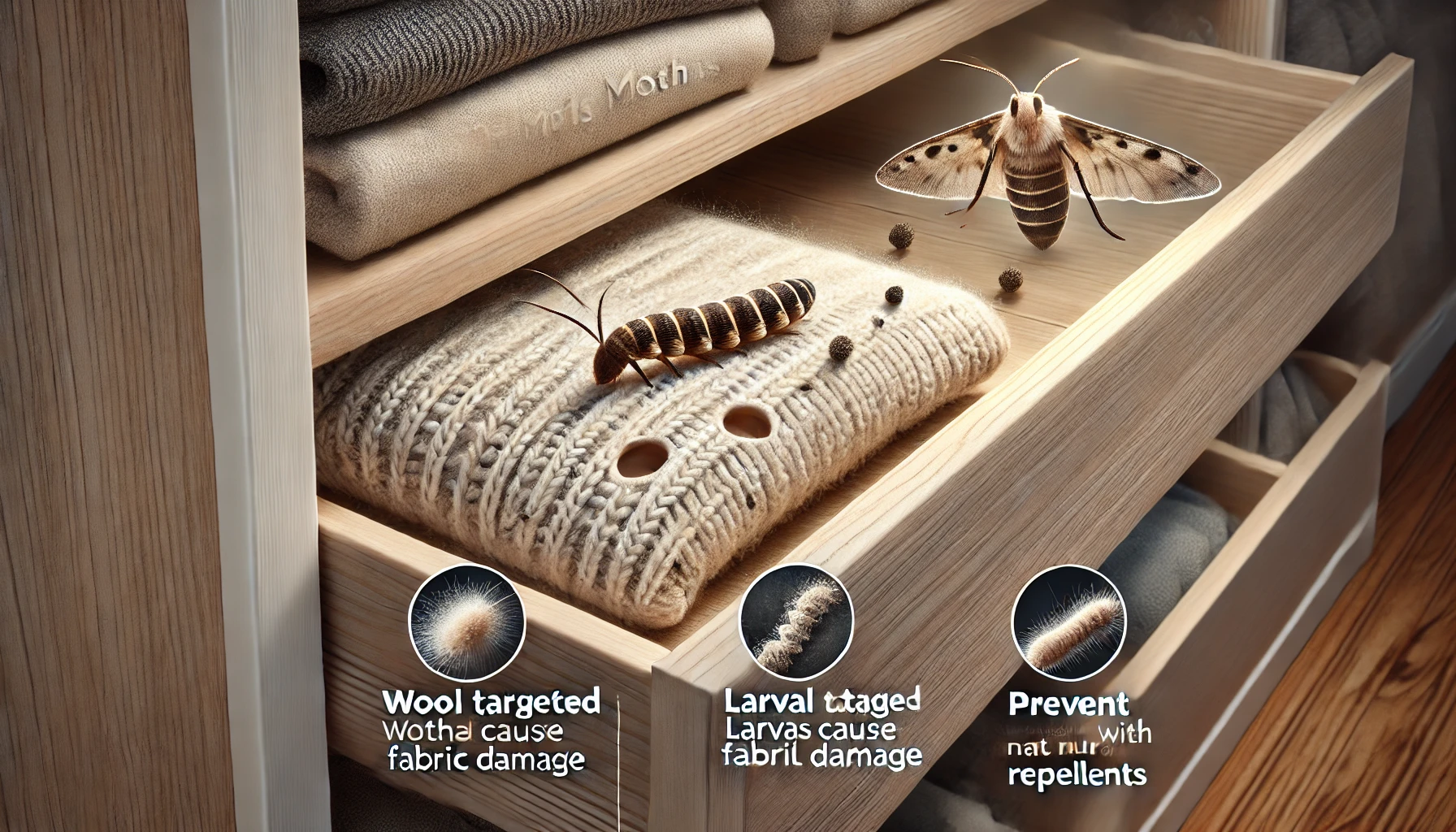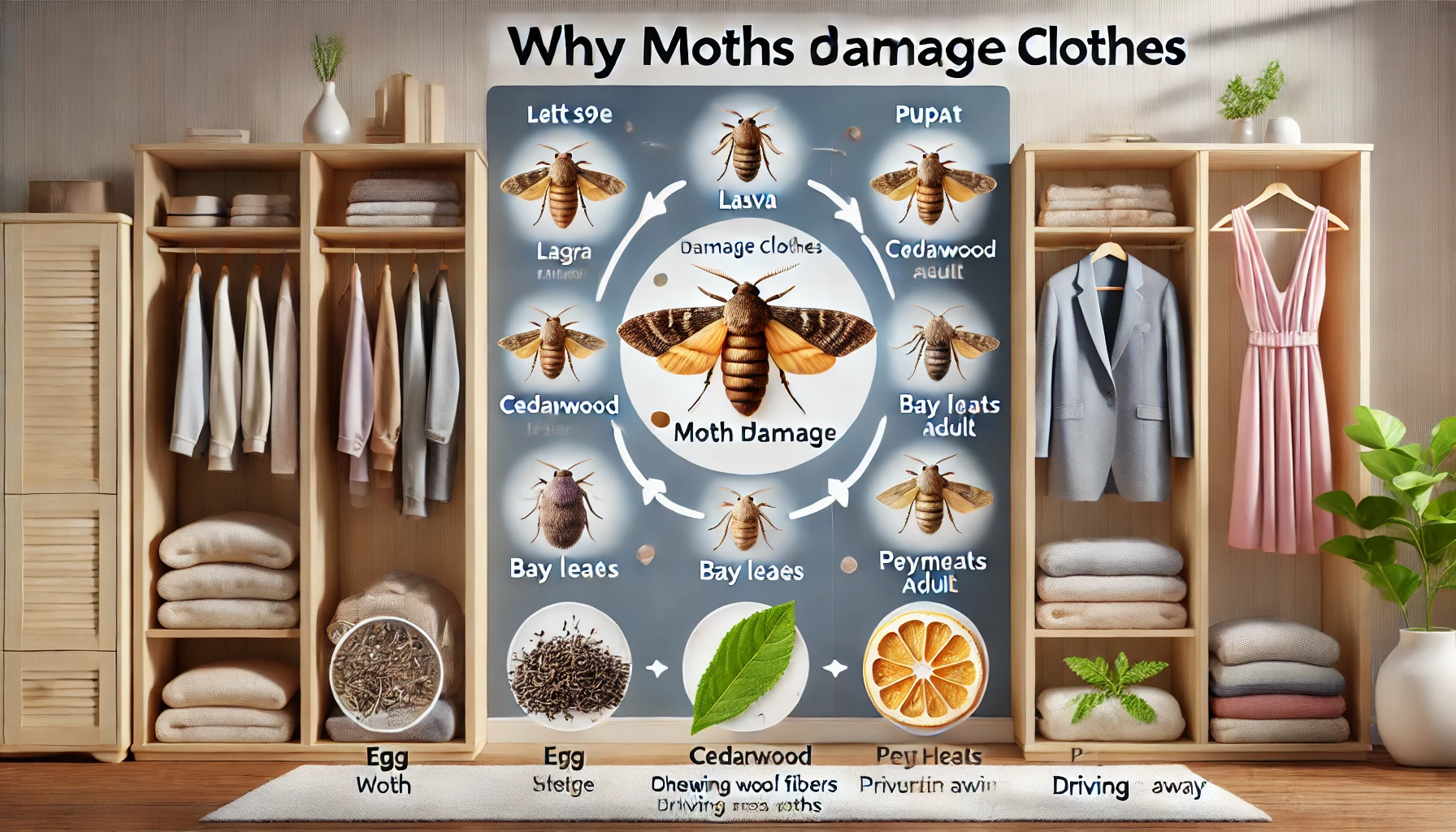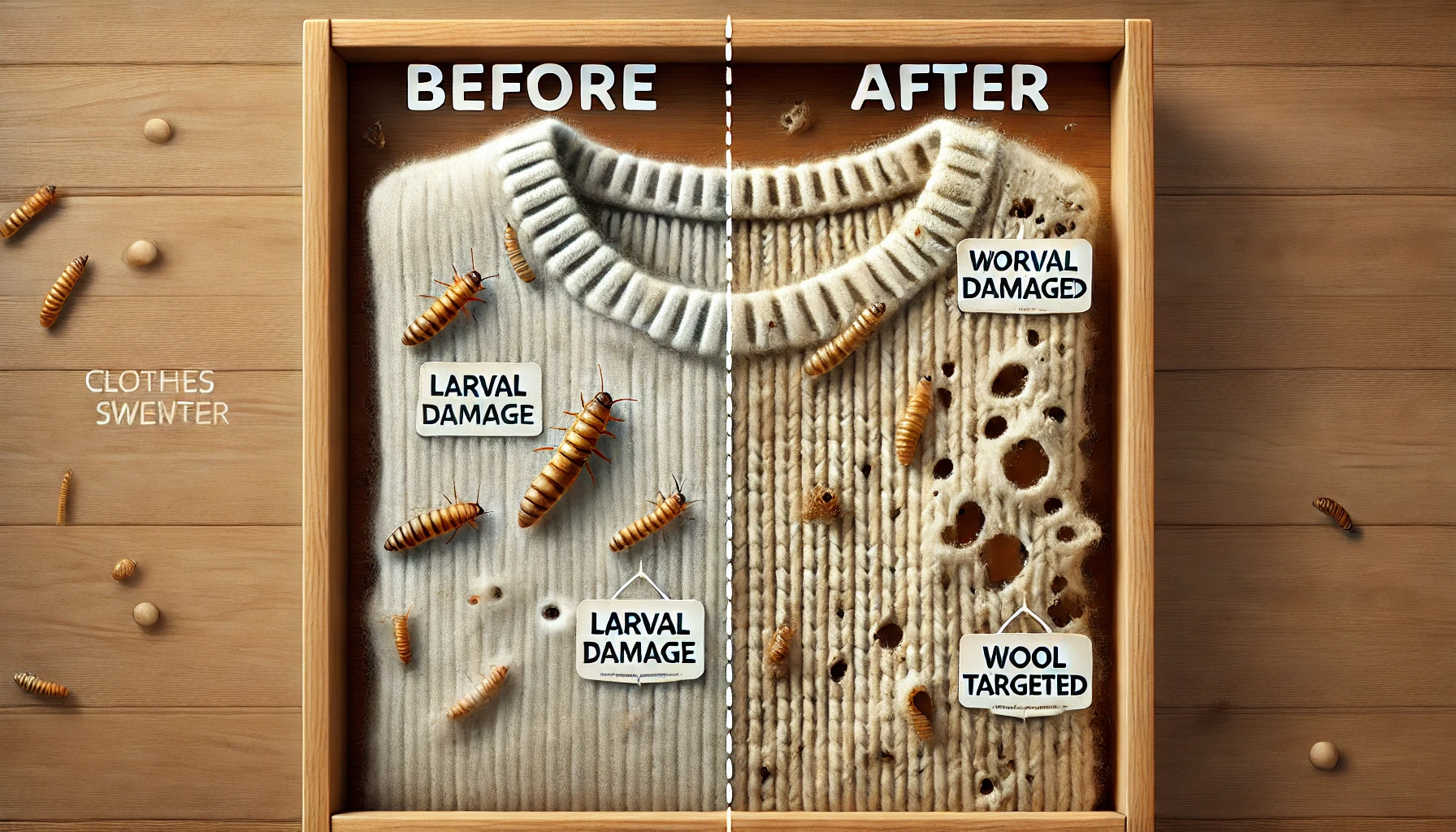Key Takeaways
- Regular cleaning and proper storage significantly reduce moth infestations.
- Always store garments clean and fresh to avoid attracting moth larvae.
- Opt for natural repellents like cedar and lavender instead of harmful chemicals.
- Maintain good ventilation and regularly air your clothing.
- Professional pest control can effectively tackle severe moth infestations.
 Ever pull your favorite wool sweater out of the closet only to find tiny, mysterious holes all over it? Honestly, it’s beyond frustrating—especially when you realize the culprit is something as small as a clothes moth larva. You know what? Those pesky little creatures can silently munch away your favourite fabrics without noticing. Fortunately, you can take several simple yet effective steps to keep tiny moths far away from your beloved wardrobe.
Ever pull your favorite wool sweater out of the closet only to find tiny, mysterious holes all over it? Honestly, it’s beyond frustrating—especially when you realize the culprit is something as small as a clothes moth larva. You know what? Those pesky little creatures can silently munch away your favourite fabrics without noticing. Fortunately, you can take several simple yet effective steps to keep tiny moths far away from your beloved wardrobe.
Why Are Moths Even Attacking Your Clothes?
First, a word of explanation: The moths you see fluttering around aren’t the real antagonists. Surprised? Their larvae — those little, wormy critters — that munch on your clothes. These larvae are particularly fond of keratin, a protein present in abundance in animal-based products wool, silk, cashmere, feathers, and fur, to name a few. They lurk in dark, undisturbed corners of your closet, doing their chewing and leaving those telltale, heartbreaking holes. Here’s the thing: early detection is your best bet. Keep an eye out for:- Irregular holes in your favorite garments
- Tiny white larvae or small silky tubes hidden in clothes
- Adult moths lurking in dark spots like corners or behind clothes


Not getting a solution?
Get your free pest control estimate today!Your Game Plan to Keep Your Clothes Moth-Free
Step 1: Get Serious About Cleaning Honestly, regular cleaning is the first line of your protection. Dust, hair, and lint-the goods that essentially gather in the closet-which is like an all-u-can-eat buffet for the moth larva. So, regular vacuum, especially under corners, shelves and even under furniture. After vacuuming, immediately leave the vacuum bag or empty the outside canister, making sure that the larva does not return in its own way. Step 2: Always Store Clean Clothes Here is a simple tip: never store clothes you are already wearing, even briefly. Sweating, body oil, and small pieces and also lights attracted the moth larva. Always wash or dry clean them before packing them away for the season or wash dry and clean clothes. This tiny but important practice can look like a another step, but it significantly reduces your chances of infection. Honestly, extra effort is worth preserving your favorite organizations. Step 3: Smart Storage is Your Friend Plastic airtight container or moth-proof apparel bags are your Go-Two options. Cardboard boxes may look convenient, but moths love how easy it is to infiltrate. Compression or vacuum-seal bags are fantastic for wool as they finish the air-some larvae need to survive. Check the item stored every few months to ensure your defense to firm. Trust me, a small regular check set a long way. Step 4: Go Natural With Moth Repellents Forget the chemical mothball, more pleasant-melted options such as cedar blocks and lavender pouches are available. Cedar naturally leaves the kites behind due to its sharp aromatic oils. Tuck the cedar block or pouch filled with dried lavender around your closet and drawer. Refresh them sometimes with a few drops of cedarwood oil or fresh dried herbs. Your clothes will smell amazing, and kites will hate it. Step 5: Air Your Clothes Regularly
You know what moth larvae love? Dark, quiet, untouched clothes. Make a habit of periodically shaking out and airing your clothes outdoors. Hanging garments in sunlight for a few hours or giving them a gentle brush outside not only disrupts larvae but also freshens your clothing. Sunlight and movement are incredibly effective at preventing moth problems, and let’s face it—freshly aired clothes always feel better.
Step 6: Keep Your Closet Well-Ventilated
A damp, stuffy closet is practically an invitation for moths to settle in. Ensure your closet gets proper airflow by occasionally leaving the door open or placing a small dehumidifier or moisture absorber inside. This simple step helps keep your clothes dry, prevents musty odours, and makes your closet much less appealing to moths. It’s a win-win situation: fresh air and moth-free clothes.
Step 7: Set Up Moth Traps
Using pheromone moth traps is like having a security alarm for your closet. These traps attract adult moths, alerting you to their presence before they have the chance to lay eggs. Place them at various heights in your closet, checking regularly and replacing them every few months. It’s a proactive measure—without the harmful chemicals. Think of it as your secret weapon against moth invasions.
Step 5: Air Your Clothes Regularly
You know what moth larvae love? Dark, quiet, untouched clothes. Make a habit of periodically shaking out and airing your clothes outdoors. Hanging garments in sunlight for a few hours or giving them a gentle brush outside not only disrupts larvae but also freshens your clothing. Sunlight and movement are incredibly effective at preventing moth problems, and let’s face it—freshly aired clothes always feel better.
Step 6: Keep Your Closet Well-Ventilated
A damp, stuffy closet is practically an invitation for moths to settle in. Ensure your closet gets proper airflow by occasionally leaving the door open or placing a small dehumidifier or moisture absorber inside. This simple step helps keep your clothes dry, prevents musty odours, and makes your closet much less appealing to moths. It’s a win-win situation: fresh air and moth-free clothes.
Step 7: Set Up Moth Traps
Using pheromone moth traps is like having a security alarm for your closet. These traps attract adult moths, alerting you to their presence before they have the chance to lay eggs. Place them at various heights in your closet, checking regularly and replacing them every few months. It’s a proactive measure—without the harmful chemicals. Think of it as your secret weapon against moth invasions.

Already Found Moths? Don’t Panic—Here’s What to Do
If you already see signs of moth damage, quick action is essential. Follow this easy, five-step plan: Step 1: Empty and Inspect Your Closet Pull out everything—yes, everything. Carefully check garments and storage spaces for larvae, eggs, and any signs of damage. Step 2: Treat Your Clothes Immediately Wash clothes in hot water (at least 120°F) or dry-clean them. For delicate items, place them in sealed plastic bags and freeze them for at least three days. Extreme temperatures are your friend here. Step 3: Deep Clean Your Closet Vacuum every nook and cranny thoroughly, then wipe shelves, rods, and walls with a solution of water and vinegar. Dispose of the vacuum bag immediately afterwards. Step 4: Reinforce Your Defense Place fresh natural repellents and moth traps in your closet. Store clothing securely in airtight containers or garment bags. It might feel like a lot, but it’s your best shot at preventing future invasions. Step 5: Keep Checking Regularly inspect your clothes and closet spaces, and promptly address any new signs of moth activity. Persistence really pays off.
When It’s Time to Bring in Professionals
Sometimes, despite your best efforts, moth infestations can persist or escalate. In these cases, bringing in professional pest control might be your smartest move. Experts can provide targeted, thorough treatments, protecting especially valuable or sentimental items.Pest professionals can quickly locate hidden infestation sources and eliminate the issue effectively, giving you peace of mind and a safe, moth-free wardrobe once again. Trusting the pros can save you lots of stress—and clothes—in the long run.
If you feel things have gone out of control, it is advised to contact pest control professionals. Our team can provide a customized approach to protect your home effectively.
Visit our Species, Control, and DIY Guide sections for additional resources on moths and ways to tackle a moths infestation.





